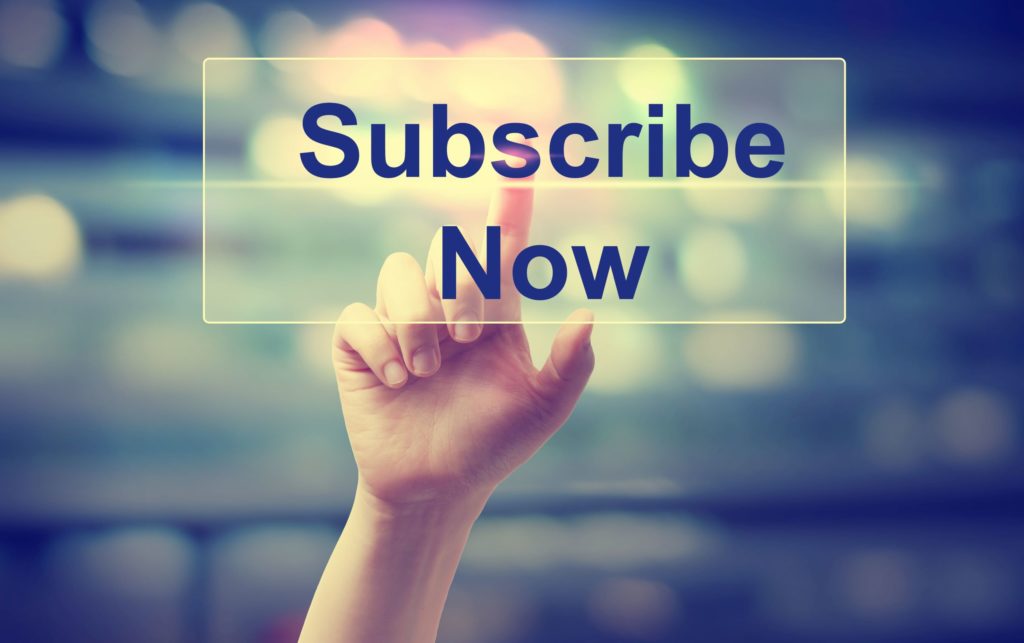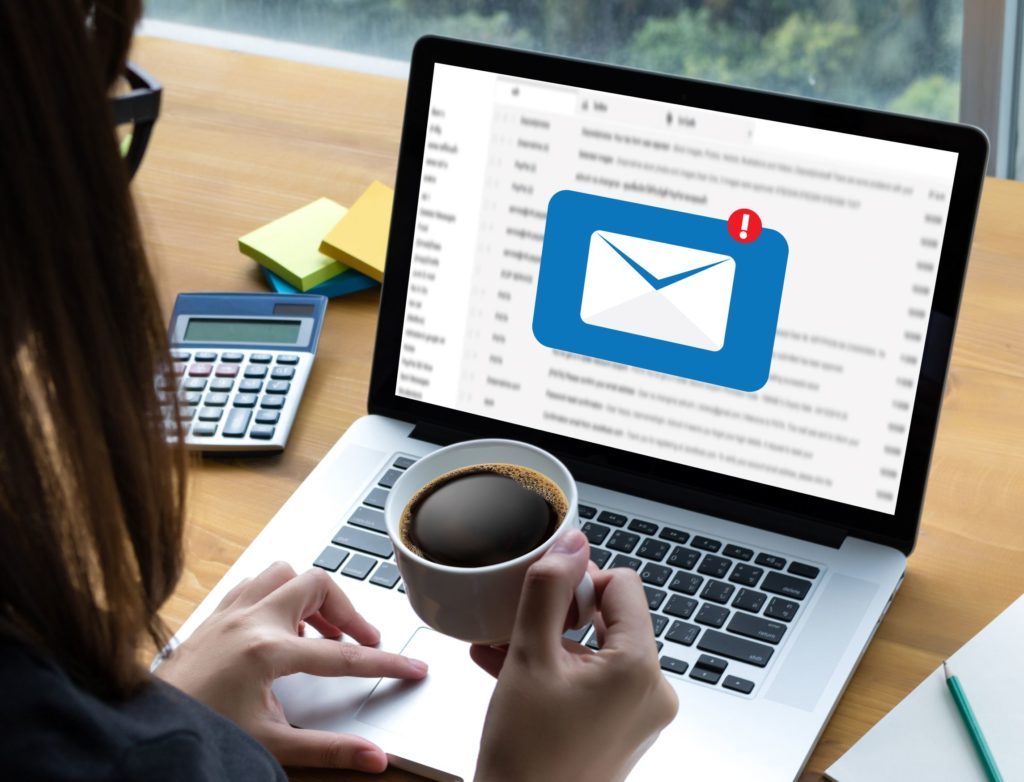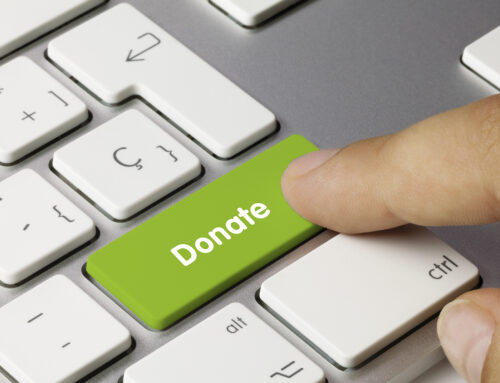
Facebook is a powerful marketing tool for small nonprofits, but the real gold is in a robust nonprofit email list.
You might be surprised to learn that email is a more reliable way to reach your supporters and build relationships with them.
Facebook has its merits, but it might show your organic content — the content you don’t pay for — to only 3 to 5 percent of your followers.
That means that if you have 100 followers, only a handful of them will see your awesome posts.
I know. It’s frustrating.
Facebook is loud and crowded with content competing for attention. If your post about an incredible success story finds its way to a supporter’s feed, it might show up sandwiched between their neighbor’s rant about getting stuck in traffic and their friend’s photos of their new dog.
Email is a more intimate way to connect with your audience. When a supporter opens your email, they are, in that moment, interacting only with your organization.
The vast majority of emails are successfully delivered to inboxes, and at least 20 percent are opened, even more if you send quality, relevant, juicy content. While an astounding 69 percent of American adults say they use Facebook, a study found that more than two-thirds say email, not Facebook, is the electronic media they check first in the morning.
Email can be personalized. You can segment your list, ensuring supporters receive only information that is relevant to them. And you can start your email with “Dear Sandy” if you have their first name.
Probably the MOST important reason you need to move people is that you don’t own your Facebook page. But you do own your email list.
If Facebook disappeared tomorrow, all your Facebook followers would be gone. You would have no way of contacting them. But an email list belongs to your organization. No one can take it away.
You with me?
I’m not saying don’t have a Facebook page. Goodness, no!
 Facebook is probably the best place to find your audience and new supporters. Just don’t depend on Facebook as your main source for connecting with your audience.
Facebook is probably the best place to find your audience and new supporters. Just don’t depend on Facebook as your main source for connecting with your audience.
It’s time to get your Facebook followers to share their email addresses so you can build your nonprofit email list.
But first, let’s talk about quality over quantity. What makes tapping your Facebook following for email subscribers so ideal is that they have already expressed interest in your organization’s work.
Buying or renting an email list may seem like a quick fix for growing a large email list, but that strategy won’t work, because the vast majority of the people on that list are probably not interested in your organization.
Also, it is against federal law to send bulk, unsolicited emails. And most email service providers, including Mailchimp, do not allow you to send emails from purchased lists.
So, don’t buy email addresses! Earn them, by inviting your social media followers to provide them.
10 Ways to Build Your Nonprofit Email List with Facebook Followers:
1. Ask. Yes, really. Just ask. Put up a Facebook post that says something like: “Tomorrow, we’re sharing Ruby’s journey in our newsletter. Her story is unbelievable! Get it delivered right to your inbox by signing up for our regular updates.” Then link to a form that opts supporters into your email list.
Include a compelling photo with this post — and every post — to attract more attention!
And DON’T ask people to join your newsletter list. No one wants another newsletter! Make it sound interesting and juicy so folks will sign up. Invite them to be, “part of the team,” “part of the family,” or, if you work in dog rescue, “part of the pack.” This type of language is warmer and more inviting.
2. Create a dedicated tab on Facebook to request email addresses. That’s right, there is a tab right on Facebook for email list sign-up. It’s in the upper left corner. Only a page administrator can add the sign-up form. You do this through your email provider.
If you use Mailchimp, here are the instructions.
3. Include a link on your profile and cover images to the page on your website where the supporter can donate and sign up for your email list. Do this every time you change your profile and cover images, as this change will be shared with your supporters. Include the link as part of the description, which supporters will see when they click on either photo. Tease the link with something like, “Don’t miss out on the latest news! Sign up for email updates.”
Remember to change your cover image about four times a year to keep your page fresh. Look for ways to occasionally tweak your profile image, too.
4. Include a link to sign up for your nonprofit email list in your About bio. This is another easy task. You probably already have a link to your organization’s website on your Facebook page, but add one into your bio so readers will find it.
 5. Offer something of value, such as a whitepaper, special report, or e-book your organization published or an infographic your organization created. When a person signs up to receive the item, request their email address.
5. Offer something of value, such as a whitepaper, special report, or e-book your organization published or an infographic your organization created. When a person signs up to receive the item, request their email address.
You might not think your organization has anything of value to offer but I bet you do. Think of what your organization could create that would be meaningful or that would make someone say “Wow, that’s interesting!”
Get creative. An animal rescue offered downloadable holiday e-cards featuring dogs in holiday attire. Another organization offered a beautiful digital calendar image on the first day of every month.
6. Launch a Facebook Ad campaign. It may pain you to think about paying for ads on Facebook. But, the reality is that Facebook has become a pay-to-play platform, and creating a paid Facebook Ad campaign is the only guaranteed way to get your content shown to a large number of your followers. There are many online resources for creating a Facebook Ad campaign and getting the most value from the strategy.
Share compelling content, with a photo, graphic, or video, along with a call-to-action to sign up for your email list. A Facebook Ad campaign will get your content in front of more supporters.
7. Announce an important call-to-action on Facebook. Offer a link to your email sign-up as a concrete step supporters can take, along with making a donation, signing a petition, or signing up to volunteer. No matter what you want people to do, ask for their email.
You may not always remember to invite people to give you their email list, so start training yourself to ask for an email every chance you get.
8. Share a blog post. Write a compelling, meaty blog entry on your organization’s website and include a strong image and, of course, an invitation to sign up for your email list with a link. Post the blog entry on Facebook along with some teaser language to encourage supporters to click on the link and read the full entry.
Regular, quality blog posts drive value in so many ways, and email list sign-up is just one of them. Make it a point to regularly post to your organization’s blog.
9. Split good stories 80/20. If you’re like most, you have lots of great stories to tell. And they usually take lots of words to tell. Get into the habit of sharing 20% of the story on Facebook then invite readers to your blog or website for the other 80%. Of course, there should be an opt-in box at the end of the story for people to opt in.
Include extra photos and video on your website or blog so readers get the juicy bits and are rewarded for clicking over to your website.
 10. Be consistent. Continue to post engaging content on Facebook and build trust with your audience. Every time you share something that touches a reader’s heart, makes them think, or makes them laugh, you’re building the relationship and showing that your nonprofit is trustworthy. That alone will help motivate people to want to keep up with the latest news.
10. Be consistent. Continue to post engaging content on Facebook and build trust with your audience. Every time you share something that touches a reader’s heart, makes them think, or makes them laugh, you’re building the relationship and showing that your nonprofit is trustworthy. That alone will help motivate people to want to keep up with the latest news.
It’s important to regularly post content that does not ask for anything, but simply inspires and informs. These posts build trust between you and your supporters. Your supporters grow in their understanding of why your organization is important, and you show them you understand what they need from your organization. When you have earned your followers’ trust, a post asking for their email address will get a positive response.
You’ve Got Your Facebook Supporters’ Email Addresses … What’s Next?
Now that you are on your way to having a robust nonprofit email list, beefed up with Facebook supporters, what do you do next? Your list is of no value if it is just sitting there.
You have to create content to send out via email, and that can be a challenge for a time-strapped small organization.
Here are six types of communication you can send to your nonprofit email list:
1. Welcome email: Send an automatic welcome email to your supporters as they sign up. You set this up through your email service provider. If you use Mailchimp, here are the instructions.
Your welcome email should thank supporters for being committed to the cause and for having trust in your organization to make a difference in the area where they have so much passion.
Include a brief story that drives home your organization’s purpose.
Then let the new subscriber know how often they can expect to hear from you via email.
For example, “We’re so glad to have you on our team and we hope you feel inspired by the stories of those we serve. We send occasional emails about events you might be interested in, opportunities to get more involved, and any breaking news. We will never sell your contact information to a third party so if you get an email from another nonprofit, they didn’t get your name from us.”
 2. Scheduled Email Updates (AKA Newsletters): Consistent communication is the backbone of any relationship, so be sure to stay in touch with your supporters if you want them to give later. Your scheduled communication (or newsletter) should go out monthly, be super easy to read, and contain only info that your readers will find interesting. Just don’t call scheduled updates ‘newsletters’ to your supporters! There is nothing more boring than a newsletter and no one wants to receive another mediocre newsletter.
2. Scheduled Email Updates (AKA Newsletters): Consistent communication is the backbone of any relationship, so be sure to stay in touch with your supporters if you want them to give later. Your scheduled communication (or newsletter) should go out monthly, be super easy to read, and contain only info that your readers will find interesting. Just don’t call scheduled updates ‘newsletters’ to your supporters! There is nothing more boring than a newsletter and no one wants to receive another mediocre newsletter.
The ultimate donor newsletter aims for a conversational note updating supporters on the lives you are changing, the trends in your field, and the ways supporters can get involved and make a difference. Keep it short. Endless communication with news item after news item will not inspire people to give or to open your next email. Make every update worth the reader’s time!
3. Breaking News: When something important happens at your organization or in your field, don’t wait for your next scheduled communication. Send something short and to the point so your readers feel “in the know.”
Examples of this are new laws that affect your work and the people you serve, the death of someone influential in your nonprofit’s niche, or a grant or gift that will enable you to significantly and immediately impact more people or animals.
4. Important Organization News: If your organization is making a big change, tell your supporters right away so they don’t hear the news elsewhere. This would involve a change in leadership, the launch of a major campaign, a move to a different facility, the dropping of a program, or the merging of your organization with another organization.
This type of news requires careful messaging, and sometimes that delays getting the word out. Don’t let the time spent getting the wording right keep you from getting the news out quickly.
5. Campaigns/Appeals: Of course, you will use email to let your supporters know about fundraising efforts. For big campaigns, you may want to send several emails. In your fundraising appeal, always include a compelling reason to donate, a short story about how your organization changes lives, and always make sure you send emails that are not campaign-focused in between campaign emails or appeals.
If every email you send out is a big front-and-center Ask for money, your subscribers will stop opening your emails. Many will unsubscribe. You can fix that by following #2 above.
6. Event News: Share the excitement about upcoming events: “Hey, we have a great event coming up! We wouldn’t want you to miss it!” Give your email subscribers first dibs on event registration when possible.
Don’t waste your supporters’ time with a special message for every holiday or emails that reiterate everything you have posted on Facebook. Make emails juicy, newsy, must-reads!
Make your supporters glad they gave you their email address.
The Bottom Line
Encouraging Facebook supporters to sign up for emails is a strategy that pays dividends. If you combine this strategy with high-quality, well-timed emails, your base of supporters will grow.
As you build a bigger nonprofit email list, you will be able to raise more money, recruit more volunteers, and benefit from the snowballing effect, as your supporters tell their friends and family members about your organization’s great work.


![Build a Nonprofit Website that Works [Steal These Ideas!]](https://getfullyfunded.com/wp-content/uploads/2012/09/AdobeStock_260038257-scaled-500x383.jpeg)



Loving your content! Thanks for all the help. About to make a call with a potential Grant Foundation. Read through your stuff this morning to prepare better!
Awesome! Fingers crossed for you that it goes well!
[…] And then find out How to Move Facebook Followers to Your Nonprofit Email List. […]
Sandy, our nonprofit has a Facebook business page, and I’m unable to find the email list sign-up tab you mentioned. Any idea where that might be hidden?
Set it up from MailChimp. Log into MailChimp and turn on the Facebook integration. You’ll be able to click the button for “Use signup form tab”.